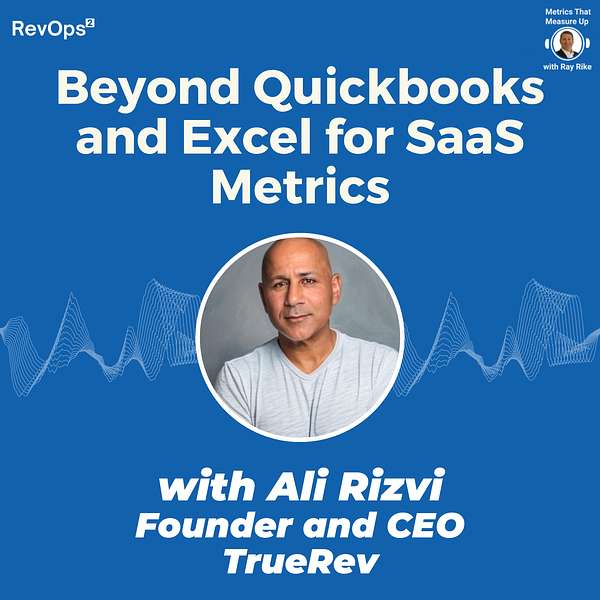
Metrics that Measure Up
Metrics that Measure Up
Evolving from Excel for SaaS Financial and Metrics Reporting - with Ali Rizvi Founder and CEO, TrueRev
Excel is the #1 tool B2B SaaS companies use for many financial tasks, including calculating SaaS metrics to surface insights for operating decisions and investor updates.
Ali started his career in tech as an auditor at Ernst and Young, with a priority focus on revenue recognition and reporting. While auditing a top tier B2B SaaS company, he was provided multiple spreadsheets with thousands of rows of data, and it even required almost 10 minutes to just open the Excel file, and almost 6 months to complete the audit. The primary challenge, finding all of the data required for the audit in an extremely large and poorly structured Excel model.
What are the top signs that a founder/CEO will see to know it might be time to move beyond Excel? Ali suggests at $1M and above that Quickbooks is a fine General Ledger, but the initial issues are associated with revenue recognition and the associated reporting. Often, this is due to not having the right human resources who truly understand revenue recognition policy, and then the manual required to create a model and the appropriate formulas for revenue recognition.
One sign that Excel might not be doing the job, is if revenue is being recognized on a cash basis. Another sign might be when an investor asks what your "MRR or ARR" is, and you realize it includes professional services or one-time fees. Why is getting revenue recognition important to an early-stage company? It becomes important when external stakeholders, like existing or potential investors, ask for things like GAAP revenue growth rates, and ARR growth rates and you cannot provide the answers because the financial foundation and reporting infrastructure have not been established.
Inevitably if you are quickly heading to $1M ARR or already above that level, founders and CEOs are expected to know their numbers. One common tactic is to hire an external accountant, and ask them to set up revenue recognition and other financial reporting in Excel - the challenge with this is that it is not scalable, and if the "rent an accountant" goes away, it is hard for the next resource to understand the excel model.
Next, we discussed the reality of ASC 606 (GAAP accounting policy), and how it impacts the need for more advanced financial reporting capabilities. ASC 606 includes very complex and nuanced accounting rules that Excel is just not well positioned to be the primary solution for modeling and reporting GAAP revenue and the associated financial metrics such as Gross Profit, EBITDA, and Net Income.
The most important initial SaaS metric is Contracted ARR, and ARR including growth rates. Quickly following is the ability to understand Sales and Marketing expenses and the associated customer acquisition cost efficiency metrics including Customer Acquisition Cost, and CAC Payback Period. Cash burn and cash runway are other critical insights that a founder/CEO needs to ensure are available and accurate early on.
When I asked Ali about other SaaS Metrics, he highlighted a recent example where a company wanted to start reporting their CARR and ARR, and they close a majority of deals mid-month. They were confused about how they report ARR for the month the contract was signed, and how those decisions impact the associated recognized revenue (GAAP revenue).
If you are an early-stage SaaS company and are having challenges with Excel to capture, calculate and report basis SaaS financials including GAAP revenue, CARR, ARR and the associated SaaS performance metrics the conversation with Ali Rizvi is highly informative.